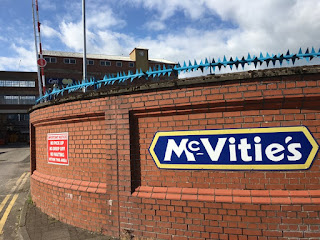The Quintinshill Rail Disaster of 1915
You may wonder why this post is focussing on this particular event. Today is the 105th anniversary of the rail crash. This tragic piece of history was kept fairly low-key at the time, after all the nation was at war and many men were losing their lives on the battlefield. The morale of the general public was important to the Government and an incident like this, on home soil, would not be good news.
The sadness of the Quintinshill disaster was it involved so many soldiers. Soldiers who were on their way to Liverpool to sail to Gallipoli. Boarding their wooden, gas lit train in Edinburgh the men, crammed into the basic rolling stock, were trying to catch some sleep before heading off to war. They were unaware of the catastrophe that lay ahead. As it was wartime, many more trains were using the railway system, and on that morning two goods trains already occupied the neighbouring Quintinshill passing loops. When the late running troop train approached the signal box at Quintinshill, the driver was therefore surprised to see a local passenger train infront, on the main line. Too late to apply the brakes, it ploughed into the back of it.
The impact of the crash reduced the length of the troop train from 197 metres to 61 metres, trapping many soldiers. Those that fought to get out of the wreckage, stumbled onto the neighbouring rail track. Unfortunately, less than two minutes later the London to Glasgow express train from Carlisle ploughed into the wreckage. The escaping gas from the lighting system on the troop train started a fire that spread quickly, killing many who had not died in the crash itself.
The crash
was heard as far as Gretna. In the aftermath
there was shock and confusion, which led to a delay in the arrival of the
Carlisle fire brigade. Local people
immediately rushed to the site and began to help the injured and dying. A survivor recalls how a farm lady made a
make-shift bandage out of her apron and tied it round his wounded head. Medical
assistance was sent from Carlisle and Glasgow, and Border Regiment soldiers
from Carlisle Castle were drafted in to help. The injured were put on whatever
was available, including a passenger train, and taken to the Cumberland
Infirmary and other hospitals nearby.
Of the 485
soldiers involved in the crash, 212 men of the Royal Scots died and many were
injured. The 58 soldiers who attended roll call were sent to Carlisle, then
onward to Liverpool the following day to continue their journey to Gallipoli. Many
were too traumatised by their experiences, declared unfit for duty and sent
back to Edinburgh to recuperate. Of the
12 people killed on the express train, 4 have never been identified. There has been speculation that they were
children who may have been stowaways.
There were 2 casualties on the local train and the crew of the troop
train were also killed. The crewmen are buried in Stanwix cemetery in Carlisle.
The two
signalmen who were on duty that morning were charged with failing to adopt
vital safety measures, found guilty, and served a prison sentence for their
part in this disaster. This rail disaster is often hidden by other
tragic events on the battlefield.





Comments
Post a Comment